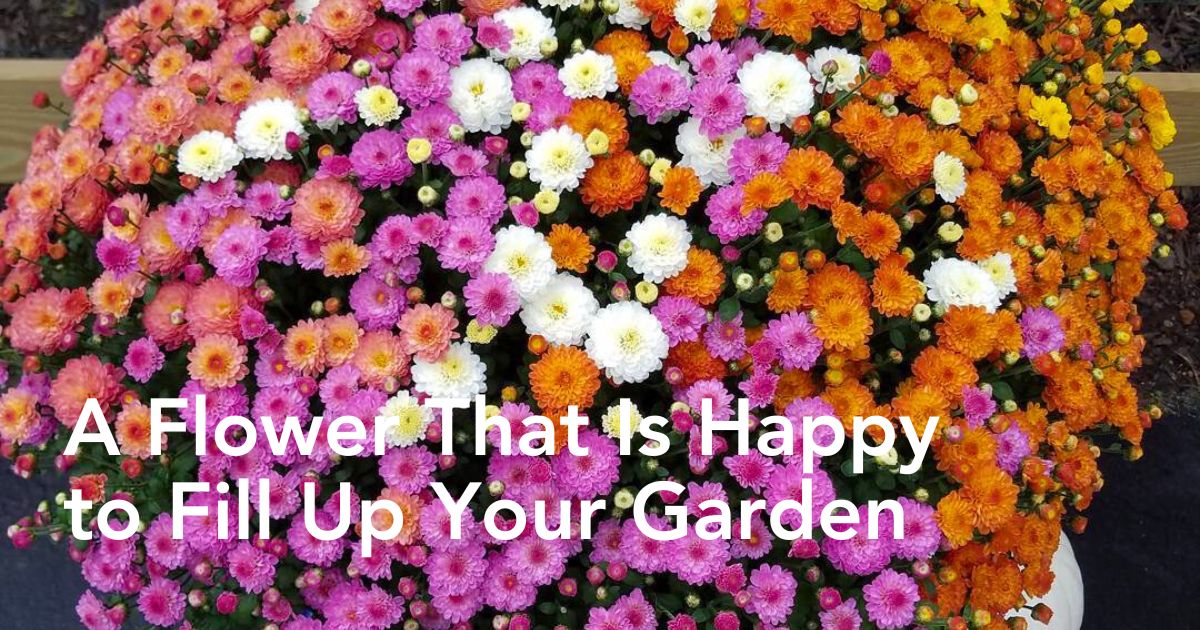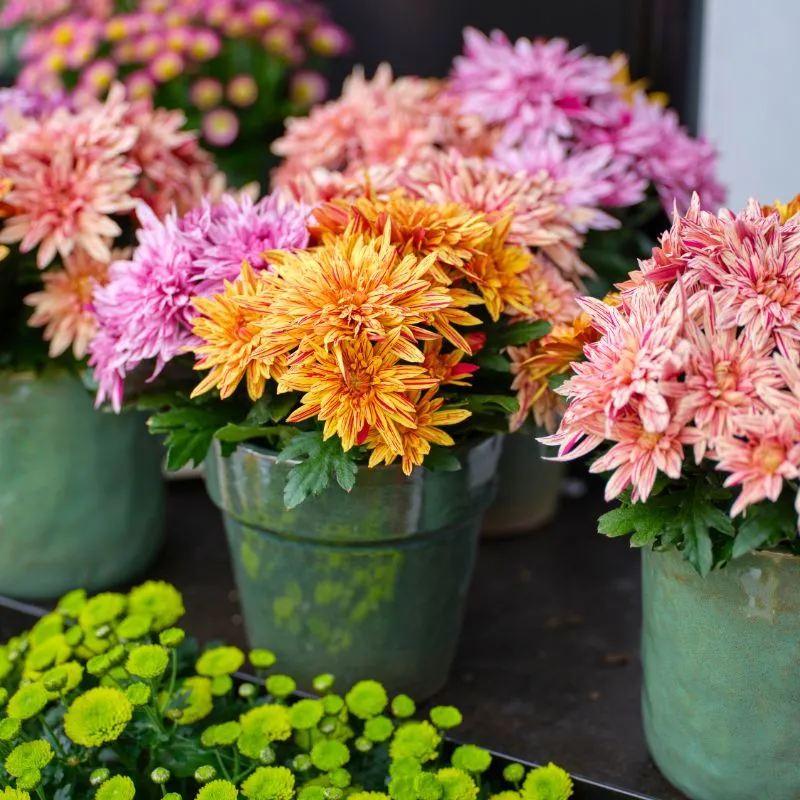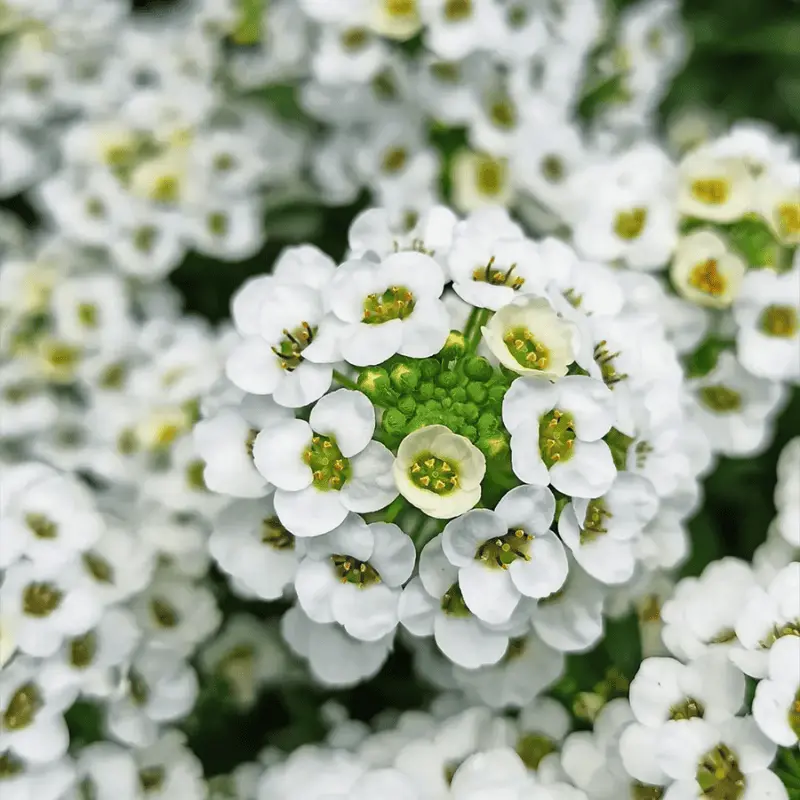Chrysanthemum x Morifolium, also known as the ‘pot mum', is a highly sought-after plant due to its adaptability and long-lasting appeal. This plant can easily brighten up any area, whether it's displayed indoors, on a patio, or even on a porch. Its ability to flourish in a range of conditions makes it a top choice for many gardeners. In this article, discover everything you need to know about planting, nurturing, and maintaining Chrysanthemum x Morifolium, so you can enjoy its presence for seasons to come.
Chrysanthemum x Morifolium - The Complete Guide to Growing and Caring for These Flowers
Chrysanthemum x Morifolium, also called garden mum or pot mum, is a widely cultivated ornamental plant often used in outdoor beds, containers, and indoor displays. It is valued for its dense growth, structured shape, and flowering pattern that lasts well into the cooler months. The plant can handle a range of environmental conditions and adapts to various locations, including patios, porches, and interior spaces with adequate light.
Different 'pot mum' varieties by Royal Van Zanten
What is Chrysanthemum x Morifolium?
Chrysanthemum x Morifolium is a hybrid species of chrysanthemum, specifically bred for ornamental purposes. It is typically grown for its showy, brightly colored flowers that bloom during late summer to fall. Chrysanthemums have been cultivated for centuries, but the Morifolium variety has become particularly popular for its hardiness and adaptability in a range of climates.
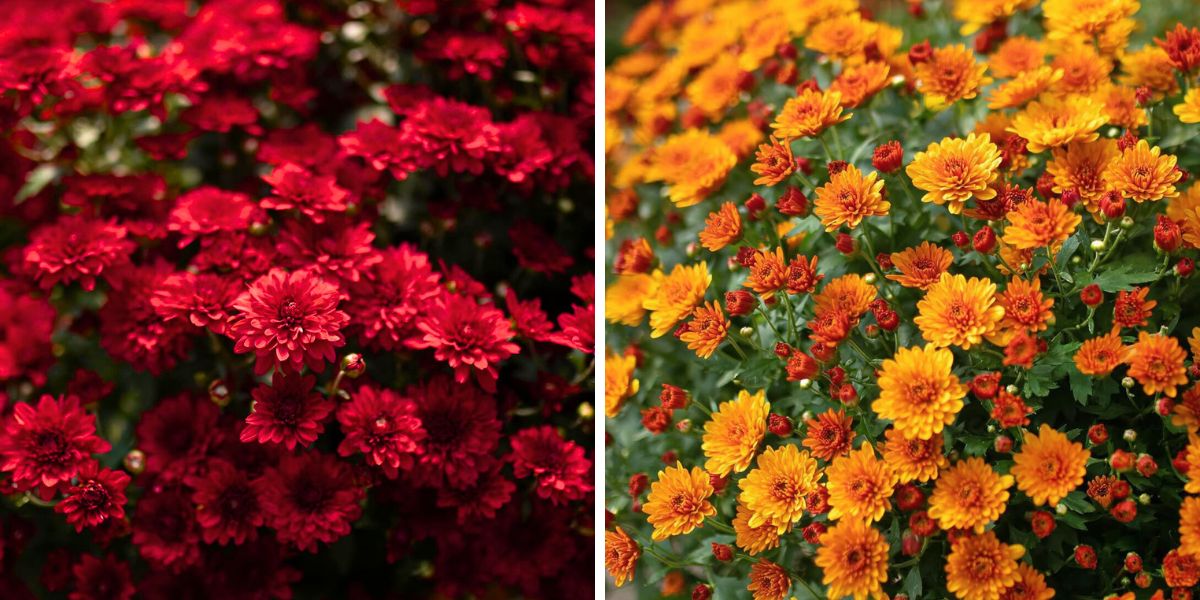
These plants are known for their large, daisy-like flowers that come in a variety of colors, including yellow, pink, red, purple, and white. Their relatively long blooming period makes them a favorite for decorating fall gardens and for use as cut flowers in arrangements.
Chrysanthemum x Morifolium Care
When it comes to growing Chrysanthemum x Morifolium, proper site selection is essential for success. While these plants can thrive in many environments, here are a few tips you may want to follow for the best results.
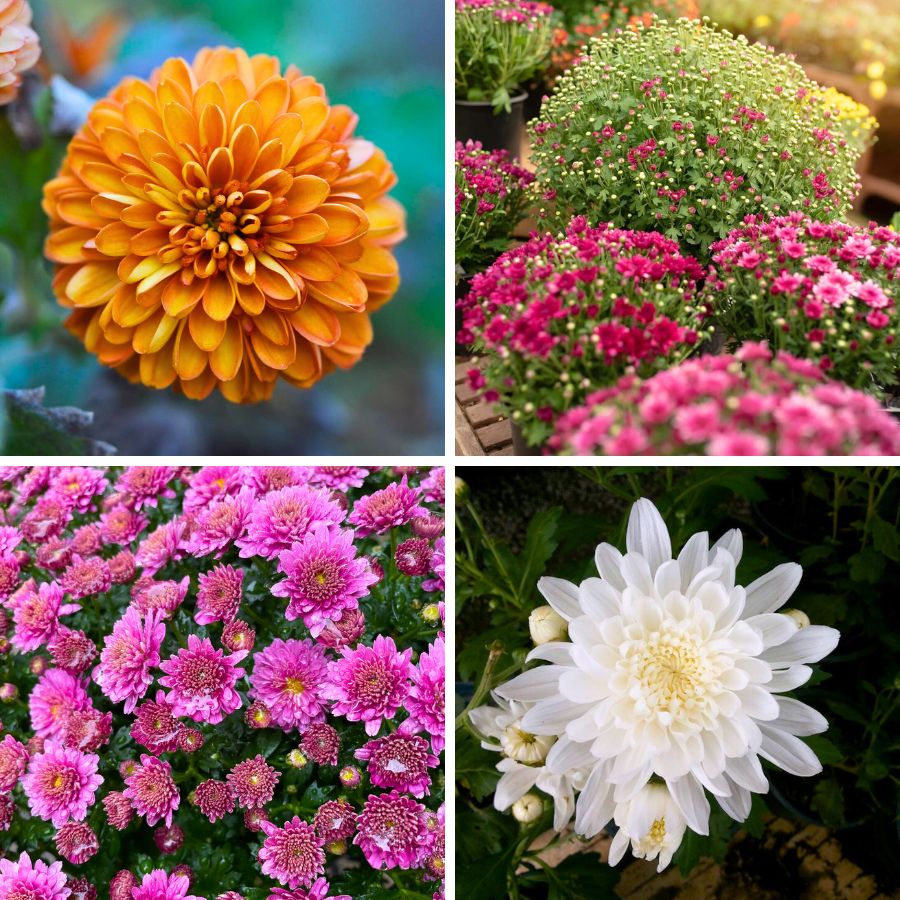
Water
Watering is one of the most crucial aspects of caring for Chrysanthemum x Morifolium, as both overwatering and underwatering can cause damage. This plant prefers consistently moist soil but doesn’t like to sit in waterlogged conditions. The key is deep watering, ensuring that water reaches the roots without soaking the foliage.
During dry spells, increase the frequency of watering, especially if the weather is hot. However, be cautious not to let the soil stay overly wet, as this can lead to root rot. Always aim to water the plant in the early morning, which helps to reduce the risk of diseases that thrive in wet conditions, like powdery mildew.
Additionally, when watering, direct the flow towards the soil and away from the leaves. Wet foliage can invite fungal infections, so it’s essential to keep the plant’s leaves dry, especially when watering during the evening or late afternoon. By keeping the watering routine consistent, you’ll help your Chrysanthemum x Morifolium maintain healthy growth and avoid stress.
Sunlight
These plants require full sun to develop properly. A minimum of six hours of direct sunlight per day is necessary for consistent flowering and dense growth. In shaded conditions, the plant may stretch and produce fewer flowers. Locations with morning and early afternoon sun are ideal, especially in warmer climates where late-day shade can help reduce stress.
Soil
This species grows best in soil that drains well and has moderate fertility. Heavy clay or overly compacted soil can lead to root issues, while overly rich soil may encourage excessive leaf growth at the expense of flowers. A slightly acidic to neutral pH is preferred.
Temperature
Moderate climates suit Chrysanthemum x Morifolium best. It performs well in USDA zones 5 through 9 but may need protection in colder areas. In hot regions, the plant may benefit from some afternoon shade. Sudden frost can damage new growth or flower buds, so in cooler zones, planting should be timed after the last frost date.
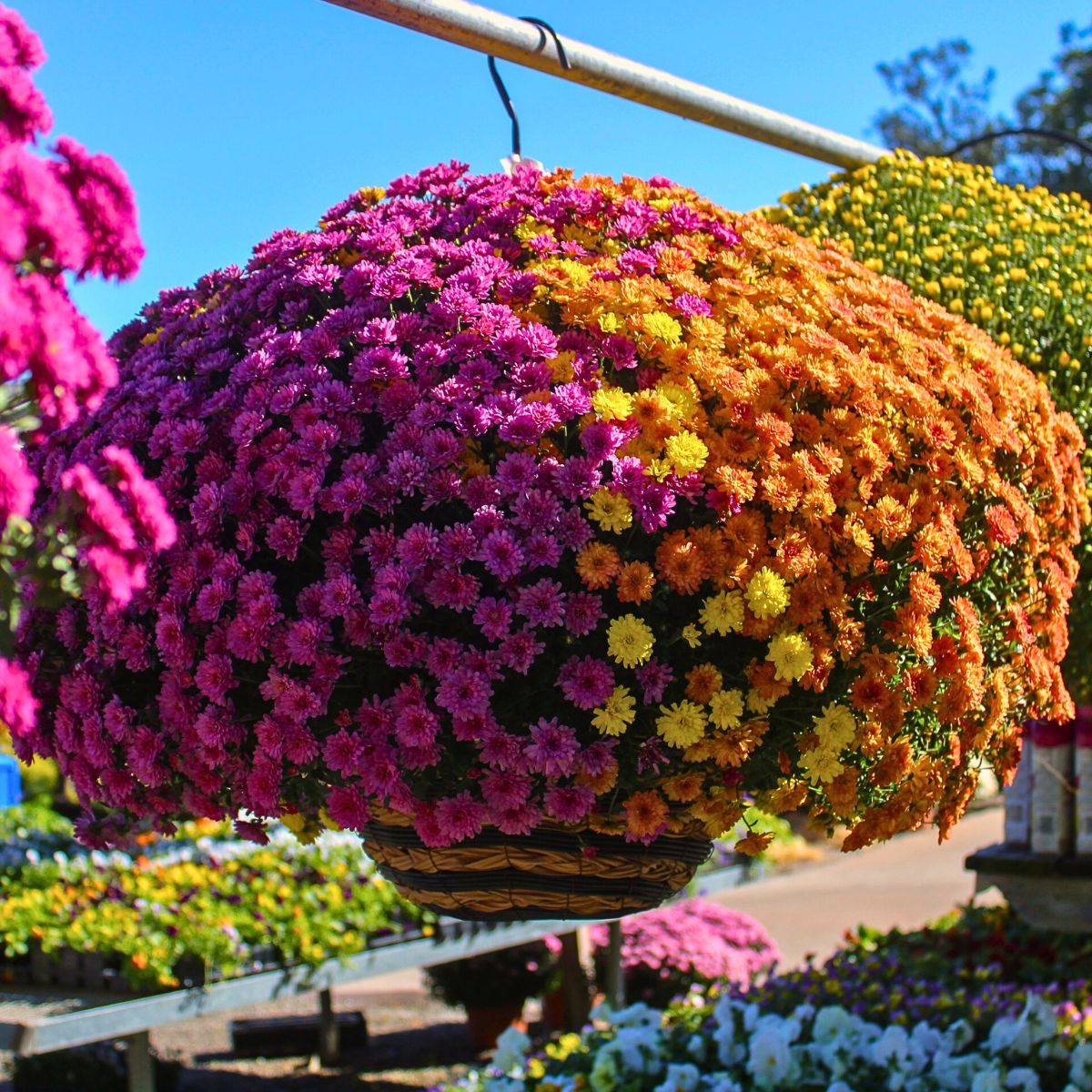
Fertilization
To encourage strong growth and abundant flowering, apply a balanced, slow-release fertilizer in the spring when new growth begins. Fertilize again in mid-summer when the buds are forming. Avoid over-fertilizing, as this can lead to excessive leaf growth at the expense of flowers.
Pruning
Pruning is important for promoting bushier growth and preventing the plant from becoming leggy. Pinch back the growing tips when the plant is about 15 cm (6 inches) tall, and continue pinching throughout the growing season to encourage a fuller shape. After blooming, trim the plant back to a few inches above the soil to prepare for winter.

Planting Chrysanthemum x Morifolium cv.- Spider Chrysanthemum
Planting Chrysanthemum x Morifolium is a relatively straightforward process. Here are the key steps to follow:
-
Timing: The best time to plant chrysanthemums is in early spring after the threat of frost has passed, or in fall if you are planting as an annual. If you live in a mild climate, you may be able to plant in the fall and allow the plants to establish themselves over the winter.
-
Planting Depth: Dig a hole that is slightly larger than the root ball of your plant. Set the plant into the hole, ensuring that the top of the root ball is level with the soil surface. Gently backfill the hole with soil and water thoroughly to settle the plant.
-
Spacing: Space plants about 18 to 24 inches apart to allow room for them to spread as they grow.
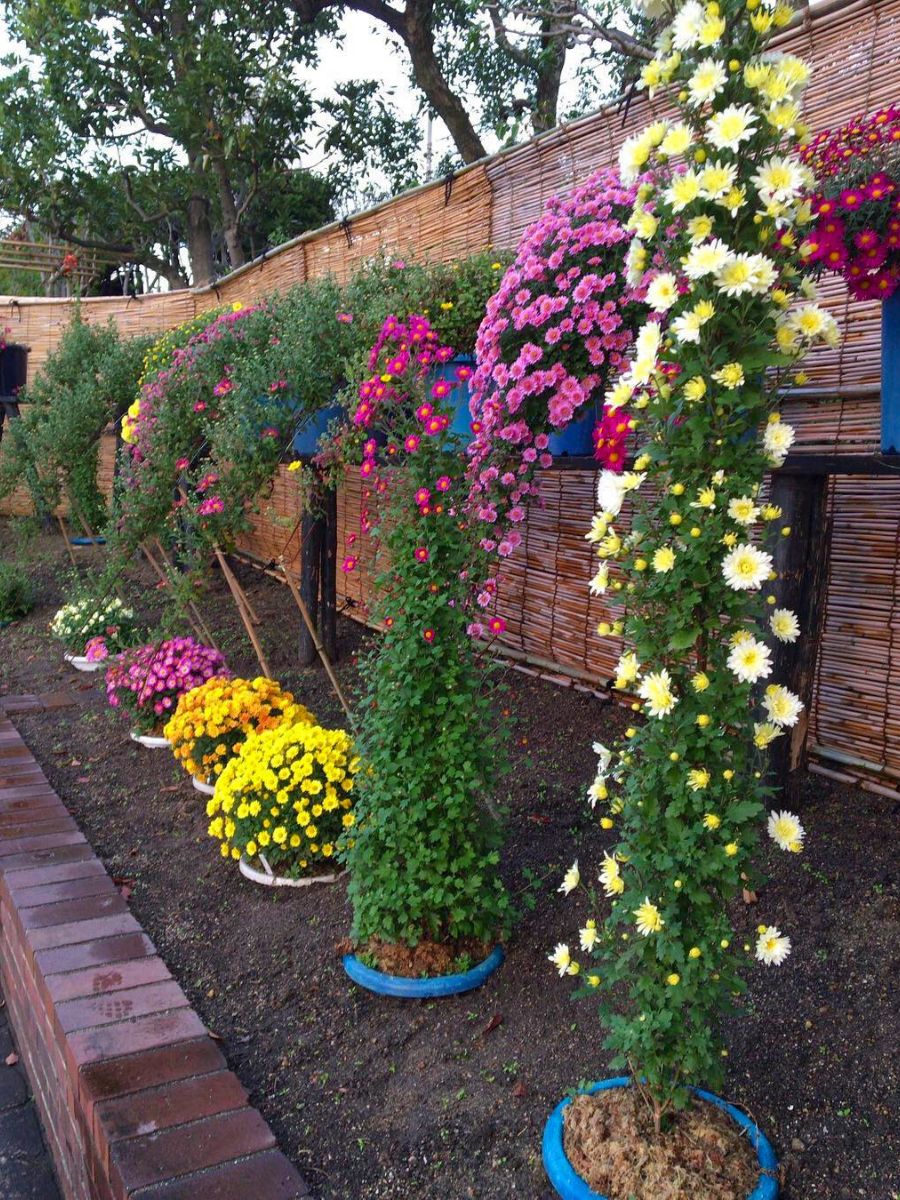
Pests and Diseases of Chrysanthemum x Morifolium
Like many ornamental plants, this type of Chrysanthemum can be susceptible to a few pests and diseases, although it is relatively resilient.
Even though it is fairly robust, several common garden pests can affect its health. Aphids often gather on new growth and the undersides of leaves, feeding on sap and potentially spreading plant viruses. Spider mites are another concern, especially in hot, dry conditions; they can cause stippling and fine webbing on the foliage. Whiteflies may also be present, particularly in greenhouse or indoor settings, where they feed on the plant and produce sticky residue. To control infestations, monitor plants regularly and remove pests manually when possible. If populations increase, use insecticidal soap or neem oil, applying thoroughly to affected areas and repeating as needed.

Fungal issues can arise when conditions are too damp or airflow is limited. Powdery mildew appears as a white, dusty layer on leaves, often during warm days and cool nights. Botrytis blight and leaf spots may also occur in persistently humid environments. Root rot is another major concern, usually caused by soil that retains too much moisture or lacks proper drainage. Preventative steps include watering at the base of the plant, spacing chrysanthemums to allow for air circulation, and avoiding watering late in the day. If disease symptoms appear, such as yellowing leaves, wilting, or visible mold, remove affected foliage and apply a fungicide as appropriate for the specific issue.
Winter Care for Chrysanthemum x Morifolium
In colder climates, chrysanthemums may not survive the winter without some protection. Here are a few tips to help your plants survive the colder months:
-
Mulching: Apply a layer of mulch around the base of the plant to help insulate the roots and protect them from freezing temperatures. Make sure the mulch is not piled directly against the stem of the plant.
-
Covering: In areas with harsh winters, you may want to cover your chrysanthemums with burlap or a frost cloth to shield them from the cold.
-
Container Plants: If you’ve planted Chrysanthemum x Morifolium in containers, consider bringing them indoors during the winter to prevent freezing. Keep them in a cool, bright area and water sparingly.
Common Problems and Troubleshooting
Despite its hardiness, Chrysanthemum x Morifolium can face a few challenges. Here are some common problems and how to address them:
-
Poor Flowering: If your chrysanthemums are not blooming, it could be due to insufficient sunlight or poor soil. Make sure the plant is getting at least six hours of direct sunlight per day, and consider fertilizing with a phosphorus-rich fertilizer to encourage flowering.
-
Leggy Growth: If your plant becomes leggy or spindly, it may not be receiving enough light or may need to be pruned back more frequently. Ensure the plant is in a sunny location and pinch back the tips to encourage bushier growth.
Chrysanthemum x Morifolium is a versatile and beautiful plant that can add a burst of color to your garden or home.
Video by: @lauritzengardens
With the right care, including proper planting, watering, and pruning, these flowers can thrive for years, bringing joy with their long-lasting flowers. Growing them is a rewarding experience that can help you create a stunning display in any space.

